- Home
- J. K. Rowling
Fantastic Beasts and Where to Find Them Page 4
Fantastic Beasts and Where to Find Them Read online
Page 4
B Tradeable Materials (Dangerous and Subject to Strict Control).
FAIRY
M.O.M. Classification: XX
The fairy is a small and decorative beast of little intelligence.7 Often used or conjured by wizards for decoration, the fairy generally inhabits woodlands or glades. Ranging in height from one to five inches, the fairy has a minute humanoid body, head, and limbs but sports large insectlike wings, which may be transparent or multi-coloured, according to type.
The fairy possesses a weak brand of magic that it may use to deter predators, such as the Augurey. It has a quarrelsome nature but, being excessively vain, it will become docile on any occasion when it is called to act as an ornament. Despite its humanlike appearance, the fairy cannot speak. It makes a high-pitched buzzing noise to communicate with its fellows.
The fairy lays up to fifty eggs at a time on the underside of leaves. The eggs hatch into brightly coloured larvae. At the age of six to ten days these spin themselves a cocoon, from which they emerge one month later as fully formed winged adults.
* * *
7 Muggles have a great weakness for fairies, which feature in a variety of tales written for their children. These “fairy tales” involve winged beings with distinct personalities and the ability to converse as humans (though often in a nauseatingly sentimental fashion). Fairies, as envisaged by the Muggle, inhabit tiny dwellings fashioned out of flower petals, hollowed-out toadstools, and similar. They are often depicted as carrying wands. Of all magical beasts the fairy might be said to have received the best Muggle press.
FIRE CRAB
M.O.M. Classification: XXX
Despite its name, the fire crab greatly resembles a large tortoise with a heavily jewelled shell. In its native Fiji, a stretch of coast has been turned into a reservation for its protection, not only against Muggles, who might be tempted by its valuable shell, but also against unscrupulous wizards, who use the shells as highly prized cauldrons. The fire crab does, however, have its own defence mechanism: It shoots flames from its rear end when attacked. Fire crabs are exported as pets but a special licence is necessary.
FLOBBERWORM
M.O.M. Classification: X
The Flobberworm lives in damp ditches. A thick brown worm reaching up to ten inches in length, the Flobberworm moves very little. One end is indistinguishable from the other, both producing the mucus from which its name is derived and which is sometimes used to thicken potions. The Flobberworm’s preferred food is lettuce, though it will eat almost any vegetation.
FWOOPER
M.O.M. Classification: XXX
The Fwooper is an African bird with extremely vivid plumage; Fwoopers may be orange, pink, lime green, or yellow. The Fwooper has long been a provider of fancy quills and also lays brilliantly patterned eggs. Though at first enjoyable, Fwooper song will eventually drive the listener to insanity8 and the Fwooper is consequently sold with a Silencing Charm upon it, which will need monthly reinforcement. Fwooper owners require licences, as the creatures must be handled responsibly.
* * *
8 Uric the Oddball attempted at one time to prove that Fwooper song was actually beneficial to the health and listened to it for three months on end without a break. Unfortunately the Wizards’ Council to which he reported his findings were unconvinced, as he had arrived at the meeting wearing nothing but a toupee that on closer inspection proved to be a dead badger.
GHOUL
M.O.M. Classification: XX
The ghoul, though ugly, is not a particularly dangerous creature. It resembles a somewhat slimy, buck-toothed ogre, and generally resides in attics or barns belonging to wizards, where it eats spiders and moths. It moans and occasionally throws objects around, but is essentially simple-minded and will, at worst, growl alarmingly at anyone who stumbles across it. A Ghoul Task Force exists at the Department for the Regulation and Control of Magical Creatures to remove ghouls from dwellings that have passed into Muggle hands, but in wizarding families the ghoul often becomes a talking point or even a family pet.
M.O.M. Classification: XXX
The Glumbumble (northern Europe) is a grey, furry-bodied flying insect that produces melancholy-inducing treacle, which is used as an antidote to the hysteria produced by eating Alihotsy leaves. It has been known to infest beehives, with disastrous effects on the honey. Glumbumbles nest in dark and secluded places such as hollow trees and caves. They feed on nettles.
GNOME
M.O.M. Classification: XX
The gnome is a common garden pest found throughout northern Europe and North America. It may reach a foot in height, with a disproportionately large head and hard, bony feet. The gnome can be expelled from the garden by swinging it in circles until dizzy and then dropping it over the garden wall. Alternatively a Jarvey may be used, though many wizards nowadays find this method of gnome-control too brutal.
GRAPHORN
M.O.M. Classification: XXXX
The Graphorn is found in mountainous European regions. Large and greyish purple with a humped back, the Graphorn has two very long, sharp horns, walks on large, four-thumbed feet, and has an extremely aggressive nature. Mountain trolls can occasionally be seen mounted on Graphorns, though the latter do not seem to take kindly to attempts to tame them and it is more common to see a troll covered in Graphorn scars. Powdered Graphorn horn is used in many potions, though it is immensely expensive owing to the difficulty in collecting it. Graphorn hide is even tougher than a dragon’s and repels most spells.
GRIFFIN
M.O.M. Classification: XXXX
The griffin originated in Greece and has the front legs and head of a giant eagle, but the body and hind legs of a lion. Like sphinxes (see below), griffins are often employed by wizards to guard treasure. Though griffins are fierce, a handful of skilled wizards have been known to befriend one. Griffins feed on raw meat.
GRINDYLOW
M.O.M. Classification: XX
A horned, pale-green water demon, the Grindylow is found in lakes throughout Britain and Ireland. It feeds on small fish and is aggressive towards wizards and Muggles alike, though merpeople have been known to domesticate it. The Grindylow has very long fingers, which, though they exert a powerful grip, are easy to break.
HIPPOCAMPUS
M.O.M. Classification: XXX
Originating in Greece, the hippocampus has the head and forequarters of a horse, and the tail and hindquarters of a giant fish. Though the species is usually to be found in the Mediterranean, a superb blue roan specimen was caught by merpeople off the shores of Scotland in 1949 and subsequently domesticated by them. The hippocampus lays large, semitransparent eggs through which the Tadfoal may be seen.
HIPPOGRIFF
M.O.M. Classification: XXX
The Hippogriff burrows for insects but will also eat birds and small mammals. Breeding Hippogriffs build nests upon the ground into which they will lay a single large and fragile egg, which hatches within twenty-four hours. The fledgling Hippogriff should be ready to fly within a week, though it will be a matter of months before it is able to accompany its parent on longer journeys.
HORKLUMP
M.O.M. Classification: X
The Horklump comes from Scandinavia but is now widespread throughout northern Europe. It resembles a fleshy, pinkish mushroom covered in sparse, wiry black bristles. A prodigious breeder, the Horklump will cover an average garden in a matter of days. It spreads sinewy tentacles rather than roots into the ground to search for its preferred food of earthworms. The Horklump is a favourite delicacy of gnomes but otherwise has no discernible use.
IMP
M.O.M. Classification: XX
The imp is found only in Britain and Ireland. It is sometimes confused with the pixie. They are of similar height (between six and eight inches), though the imp cannot fly as the pixie can, nor is it as vividly coloured (the imp is usually dark brown to black). It does, however, have a similar slapstick sense of humour. Its preferred terrain is damp and marshy, and it is oft
en found near river banks, where it will amuse itself by pushing and tripping the unwary. Imps eat small insects and have breeding habits much like the fairies, though imps do not spin cocoons; the young are hatched fully formed at around one inch in length.
JARVEY
M.O.M. Classification: XXX
The Jarvey is found in Britain, Ireland, and North America. It resembles an overgrown ferret in most respects, except for the fact that it can talk. True conversation, however, is beyond the wit of the Jarvey, which tends to confine itself to short (and often rude) phrases in an almost constant stream. Jarveys live mostly below ground, where they pursue gnomes, though they will also eat moles, rats, and voles.
JOBBERKNOLL
M.O.M. Classification: XX
The Jobberknoll (northern Europe and America) is a tiny blue, speckled bird which eats small insects. It makes no sound until the moment of its death, at which point it lets out a long scream made up of every sound it has ever heard, regurgitated backwards. Jobberknoll feathers are used in Truth Serums and Memory Potions.
KAPPA
M.O.M. Classification: XXXX
The Kappa feeds on human blood but may be persuaded not to harm a person if it is thrown a cucumber with that person’s name carved into it. In confrontation, a wizard should trick the Kappa into bowing – if it does so, the water in the hollow of its head will run out, depriving it of all its strength.
KELPIE
M.O.M. Classification: XXXX
This British and Irish water demon can take various shapes, though it most often appears as a horse with bulrushes for a mane. Having lured the unwary onto its back, it will dive straight to the bottom of its river or lake and devour the rider, letting the entrails float to the surface. The correct means to overcome a kelpie is to get a bridle over its head with a Placement Charm, which renders it docile and unthreatening.
The world’s largest kelpie is found in Loch Ness, Scotland. Its favourite form is that of a sea serpent (see below). International Confederation of Wizard observers realised that they were not dealing with a true serpent when they saw it turn into an otter on the approach of a team of Muggle investigators and then transform back into a serpent when the coast was clear.
KNARL
M.O.M. Classification: XXX
The Knarl (northern Europe and America) is usually mistaken for a hedgehog by Muggles. The two species are indeed indistinguishable except for one important behavioural difference: If food is left out in the garden for a hedgehog, it will accept and enjoy the gift; if food is offered to a Knarl, on the other hand, it will assume that the householder is attempting to lure it into a trap and will savage that householder’s garden plants or garden ornaments. Many a Muggle child has been accused of vandalism when an offended Knarl was the real culprit.
KNEAZLE
M.O.M. Classification: XXX
The Kneazle was originally bred in Britain, though it is now exported worldwide. A small catlike creature with flecked, speckled, or spotted fur, outsize ears, and a tail like a lion’s, the Kneazle is intelligent, independent, and occasionally aggressive, though if it takes a liking to a witch or wizard, it makes an excellent pet. The Kneazle has an uncanny ability to detect unsavoury or suspicious characters and can be relied upon to guide its owner safely home if they are lost. Kneazles have up to eight kittens in a litter and can interbreed with cats. Licences are required for ownership as (like Crups and Fwoopers) Kneazles are sufficiently unusual in appearance to attract Muggle interest.
LEPRECHAUN(sometimes known as Clauricorn)
M.O.M. Classification: XXX
More intelligent than the fairy and less malicious than the imp, the pixie, or the Doxy, the leprechaun is nevertheless mischievous. Found only in Ireland, it achieves a height of up to six inches and is green in colour. It has been known to create crude clothing from leaves. Alone of the “little people,” leprechauns can speak, though they have never requested reclassification as “beings.” The leprechaun bears live young and lives mostly in forest and woodland areas, though it enjoys attracting Muggle attention and as a consequence features almost as heavily as the fairy in Muggle literature for children. Leprechauns produce a realistic goldlike substance that vanishes after a few hours, to their great amusement. Leprechauns eat leaves and, despite their reputation as pranksters, are not known ever to have done lasting damage to a human.
LETHIFOLD(also known as Living Shroud)
M.O.M. Classification: XXXXX
The Lethifold is a mercifully rare creature found solely in tropical climates. It resembles a black cloak perhaps half an inch thick (thicker if it has recently killed and digested a victim), which glides along the ground at night. The earliest account we have of a Lethifold was written by the wizard Flavius Belby, who was fortunate enough to survive a Lethifold attack in 1782 while holidaying in Papua New Guinea.
Near one o’clock in the morning, as I began at last to feel drowsy, I heard a soft rustling close by. Believing it to be nothing more than the leaves of the tree outside, I turned over in bed, with my back to the window, and caught sight of what appeared to be a shapeless black shadow sliding underneath my bedroom door. I lay motionless, trying sleepily to divine what was causing such a shadow in a room lit only by moonlight. Undoubtedly my stillness led the Lethifold to believe that its potential victim was sleeping.
To my horror, the shadow began to creep up the bed, and I felt its slight weight upon me. It resembled nothing so much as a rippling black cape, the edges fluttering slightly as it slithered up the bed towards me. Paralysed with fear, I felt its clammy touch upon my chin before I sat bolt upright.
The thing attempted to smother me, sliding inexorably up my face, over my mouth and nostrils, but still I struggled, feeling it wrapping its coldness about me all the while. Unable to cry for assistance, I groped for my wand. Now dizzy as the thing sealed itself about my face, incapable of drawing breath, I concentrated with all my might upon the Stupefying Charm and then – as that failed to subdue the creature, though blasting a hole in my bedroom door – upon the Impediment Hex, which likewise availed me naught. Still struggling madly, I rolled sideways and fell heavily to the floor, now entirely wrapped in the Lethifold.
I knew that I was about to lose consciousness completely as I suffocated. Desperately, I mustered up my last reserve of energy. Pointing my wand away from myself into the deadly folds of the creature, summoning the memory of the day I had been voted President of the local Gobstones Club, I performed the Patronus Charm.
Almost at once I felt fresh air upon my face. I looked up to see that deathly shadow being thrown into the air upon the horns of my Patronus. It flew across the room and slithered swiftly out of sight.

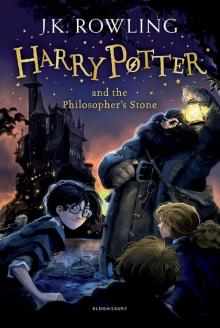 Harry Potter and the Philosophers Stone
Harry Potter and the Philosophers Stone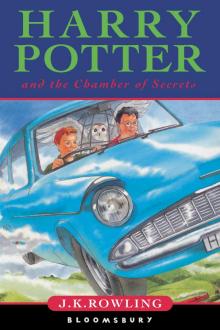 Harry Potter and the Chamber of Secrets
Harry Potter and the Chamber of Secrets Harry Potter and the Goblet of Fire
Harry Potter and the Goblet of Fire Harry Potter and the Deathly Hallows
Harry Potter and the Deathly Hallows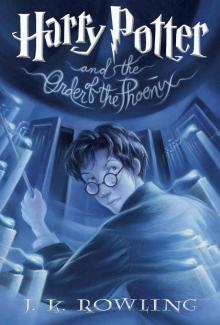 Harry Potter and the Order of the Phoenix
Harry Potter and the Order of the Phoenix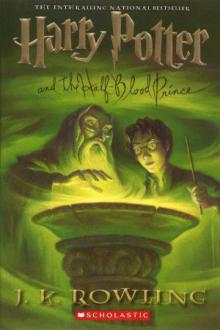 Harry Potter and the Half-Blood Prince
Harry Potter and the Half-Blood Prince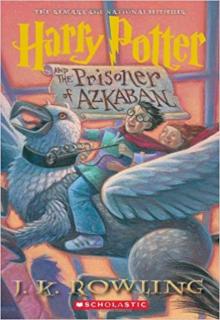 Harry Potter and the Prisoner of Azkaban
Harry Potter and the Prisoner of Azkaban Fantastic Beasts and Where to Find Them
Fantastic Beasts and Where to Find Them Short Stories from Hogwarts of Heroism, Hardship and Dangerous Hobbies
Short Stories from Hogwarts of Heroism, Hardship and Dangerous Hobbies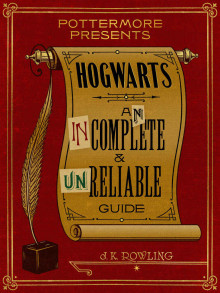 Hogwarts: An Incomplete and Unreliable Guide
Hogwarts: An Incomplete and Unreliable Guide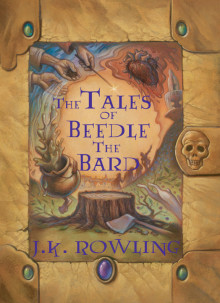 The Tales of Beedle the Bard
The Tales of Beedle the Bard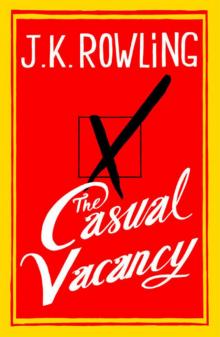 The Casual Vacancy
The Casual Vacancy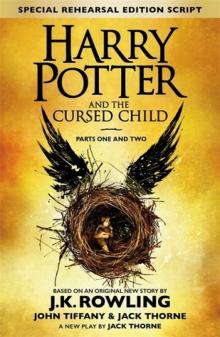 Harry Potter and the Cursed Child
Harry Potter and the Cursed Child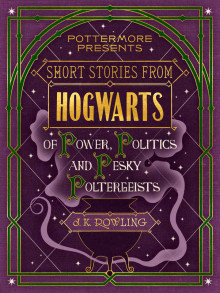 Short Stories from Hogwarts of Power, Politics and Pesky Poltergeists
Short Stories from Hogwarts of Power, Politics and Pesky Poltergeists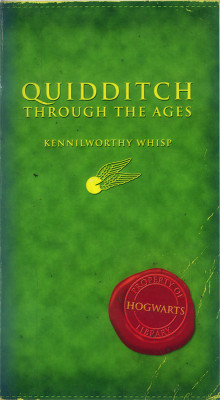 Quidditch Through the Ages
Quidditch Through the Ages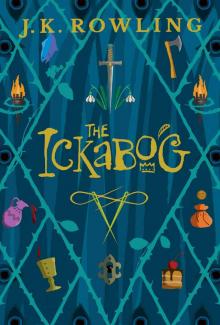 The Ickabog
The Ickabog![Fantastic Beasts, The Crimes of Grindelwald [UK] Read online](http://i1.bookreadfree.com/i/03/19/fantastic_beasts_the_crimes_of_grindelwald_uk_preview.jpg) Fantastic Beasts, The Crimes of Grindelwald [UK]
Fantastic Beasts, The Crimes of Grindelwald [UK]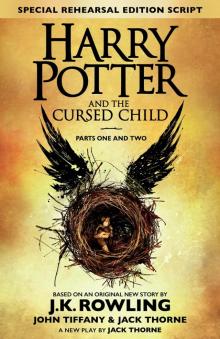 Harry Potter and the Cursed Child: Parts One and Two
Harry Potter and the Cursed Child: Parts One and Two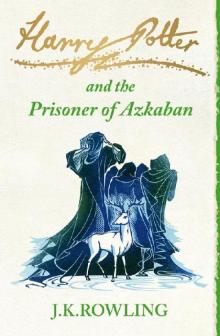 The Prisoner of Azkaban
The Prisoner of Azkaban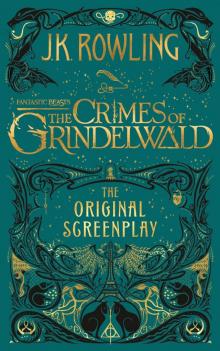 Fantastic Beasts: The Crimes of Grindelwald
Fantastic Beasts: The Crimes of Grindelwald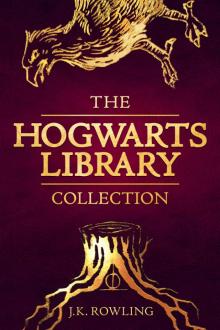 The Hogwarts Library Collection
The Hogwarts Library Collection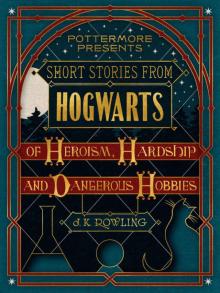 Short Stories from Hogwarts of Heroism, Hardship and Dangerous Hobbies (Kindle Single) (Pottermore Presents)
Short Stories from Hogwarts of Heroism, Hardship and Dangerous Hobbies (Kindle Single) (Pottermore Presents)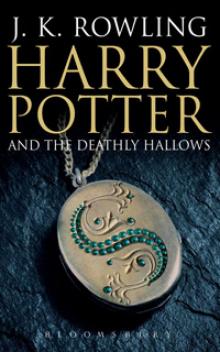 Harry Potter and the Deathly Hallows hp-7
Harry Potter and the Deathly Hallows hp-7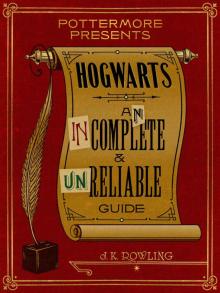 Hogwarts: An Incomplete and Unreliable Guide (Kindle Single) (Pottermore Presents)
Hogwarts: An Incomplete and Unreliable Guide (Kindle Single) (Pottermore Presents)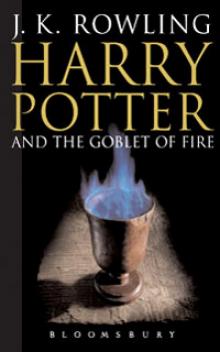 Harry Potter and the Goblet of Fire hp-4
Harry Potter and the Goblet of Fire hp-4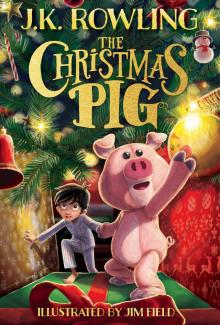 The Christmas Pig
The Christmas Pig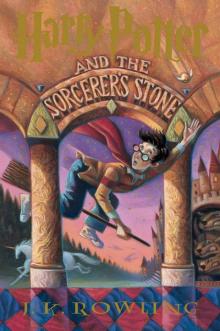 Harry Potter and the Sorcerer's Stone
Harry Potter and the Sorcerer's Stone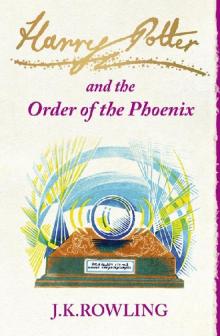 The Order of the Phoenix
The Order of the Phoenix Harry Potter and the Prisoner of Azkaban hp-3
Harry Potter and the Prisoner of Azkaban hp-3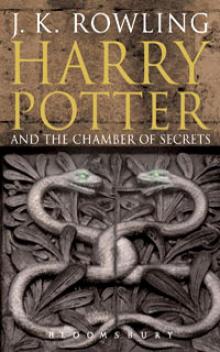 Harry Potter and the Chamber of Secrets hp-2
Harry Potter and the Chamber of Secrets hp-2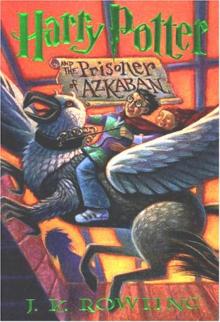 HP 3 - Harry Potter and the Prisoner of Azkaban
HP 3 - Harry Potter and the Prisoner of Azkaban The Half-Blood Prince
The Half-Blood Prince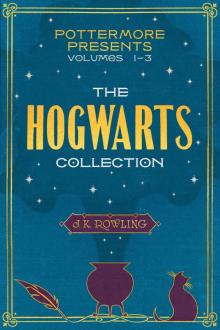 The Hogwarts Collection
The Hogwarts Collection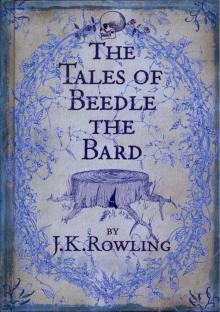 Tales of Beedle the Bard
Tales of Beedle the Bard The Goblet of Fire
The Goblet of Fire Harry Potter and the Half-Blood Prince hp-6
Harry Potter and the Half-Blood Prince hp-6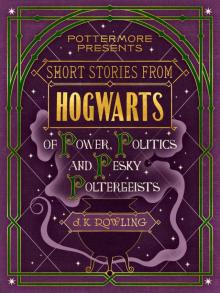 Short Stories from Hogwarts of Power, Politics and Pesky Poltergeists (Kindle Single) (Pottermore Presents)
Short Stories from Hogwarts of Power, Politics and Pesky Poltergeists (Kindle Single) (Pottermore Presents)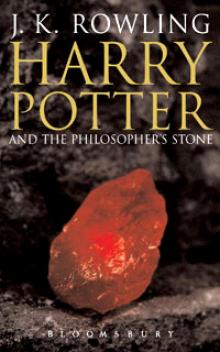 Harry Potter and the Sorcerer's Stone hp-1
Harry Potter and the Sorcerer's Stone hp-1